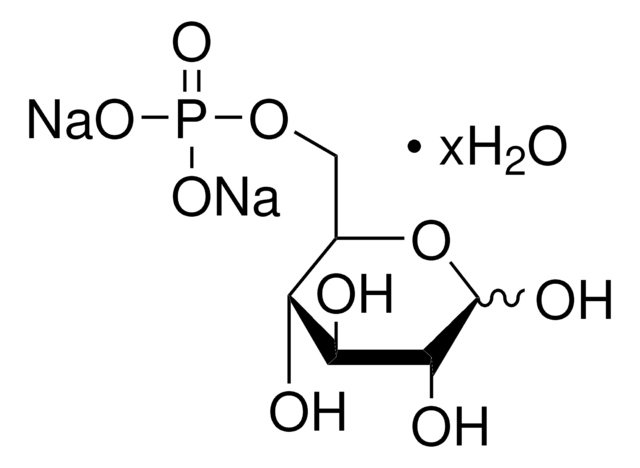MAK014
Glucose-6-Phosphate Assay Kit
sufficient for 100 colorimetric tests
About This Item
Produits recommandés
Utilisation
sufficient for 100 colorimetric tests
Méthode de détection
colorimetric
Maladie(s) pertinente(s)
hematological disorder
Température de stockage
−20°C
Description générale
Application
- glucose 6-phosphate (G6P) assay
- quantification of glucose-6-phosphate (G6P) and fructose-6-phosphate (F6P)
- metabolite analysis
Adéquation
Principe
Remplacé(e)(s) par
Mention d'avertissement
Danger
Mentions de danger
Classification des risques
Eye Dam. 1 - Resp. Sens. 1 - Skin Corr. 1B
Code de la classe de stockage
8A - Combustible corrosive hazardous materials
Certificats d'analyse (COA)
Recherchez un Certificats d'analyse (COA) en saisissant le numéro de lot du produit. Les numéros de lot figurent sur l'étiquette du produit après les mots "Lot" ou "Batch".
Déjà en possession de ce produit ?
Retrouvez la documentation relative aux produits que vous avez récemment achetés dans la Bibliothèque de documents.
Articles
We presents an article about the Warburg effect, and how it is the enhanced conversion of glucose to lactate observed in tumor cells, even in the presence of normal levels of oxygen. Otto Heinrich Warburg demonstrated in 1924 that cancer cells show an increased dependence on glycolysis to meet their energy needs, regardless of whether they were well-oxygenated or not.
We presents an article about the Warburg effect, and how it is the enhanced conversion of glucose to lactate observed in tumor cells, even in the presence of normal levels of oxygen. Otto Heinrich Warburg demonstrated in 1924 that cancer cells show an increased dependence on glycolysis to meet their energy needs, regardless of whether they were well-oxygenated or not.
Protocoles
Assay protocol for the colorimetric detection of glucose-6-phosphate in biological samples using the glucose-6-phosphate assay kit.
Assay protocol for the colorimetric detection of glucose-6-phosphate in biological samples using the glucose-6-phosphate assay kit.
Notre équipe de scientifiques dispose d'une expérience dans tous les secteurs de la recherche, notamment en sciences de la vie, science des matériaux, synthèse chimique, chromatographie, analyse et dans de nombreux autres domaines..
Contacter notre Service technique





